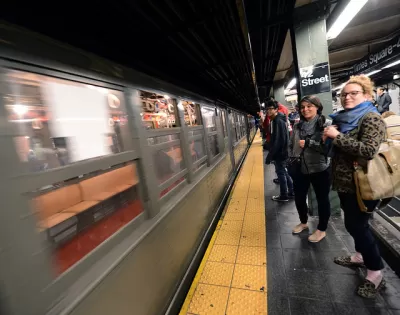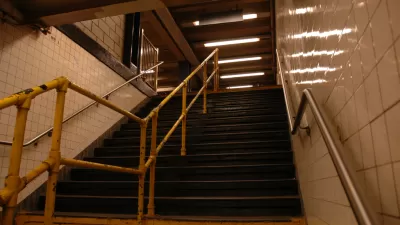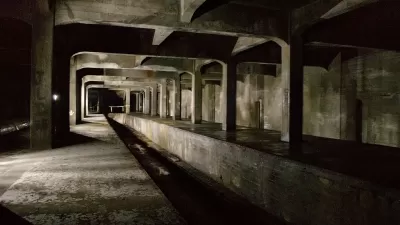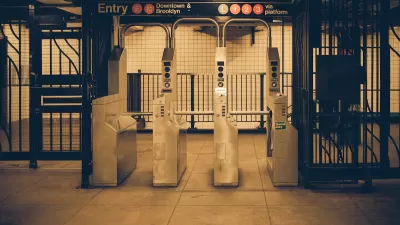Brooklyn N and R trains can now move at faster top speeds, but only when there aren’t stopped trains ahead.

New York’s Subway trains are among the slowest in the county, but that may be changing. “Over the weekend, the speed limit was raised on parts of two lines in Brooklyn — the N and R trains — from 15 miles per hour to as much as 30 miles per hour. Other lines will be sped up in coming months,” Emma G. Fitzsimmons reports for The New York Times. MTA CEO Andy Byford is changing the limits on certain stretches of New York subway lines in the hopes of improving service. These limits had been put in place after a series of crashes in the '90s, but now officials are confident they can speed up trains safely, by doing it strategically.
Beyond changing regulations, Byford is also improving some of the equipment. “Workers have also started to replace faulty signals that trigger a train’s emergency brakes at low speeds, a problem investigated by The New York Times and The Village Voice that has also led to slower service,” Fitzsimmons writes.
Still, observers point out, these speed gains will only be realized when trains are running smoothly. Breakdowns or stopped trains ahead will still bring N and R trains to a halt.
FULL STORY: Why Your Subway Train Might Start Moving Faster

Planetizen Federal Action Tracker
A weekly monitor of how Trump’s orders and actions are impacting planners and planning in America.

Restaurant Patios Were a Pandemic Win — Why Were They so Hard to Keep?
Social distancing requirements and changes in travel patterns prompted cities to pilot new uses for street and sidewalk space. Then it got complicated.

Map: Where Senate Republicans Want to Sell Your Public Lands
For public land advocates, the Senate Republicans’ proposal to sell millions of acres of public land in the West is “the biggest fight of their careers.”

Maui's Vacation Rental Debate Turns Ugly
Verbal attacks, misinformation campaigns and fistfights plague a high-stakes debate to convert thousands of vacation rentals into long-term housing.

San Francisco Suspends Traffic Calming Amidst Record Deaths
Citing “a challenging fiscal landscape,” the city will cease the program on the heels of 42 traffic deaths, including 24 pedestrians.

California Homeless Arrests, Citations Spike After Ruling
An investigation reveals that anti-homeless actions increased up to 500% after Grants Pass v. Johnson — even in cities claiming no policy change.
Urban Design for Planners 1: Software Tools
This six-course series explores essential urban design concepts using open source software and equips planners with the tools they need to participate fully in the urban design process.
Planning for Universal Design
Learn the tools for implementing Universal Design in planning regulations.
Heyer Gruel & Associates PA
JM Goldson LLC
Custer County Colorado
City of Camden Redevelopment Agency
City of Astoria
Transportation Research & Education Center (TREC) at Portland State University
Camden Redevelopment Agency
City of Claremont
Municipality of Princeton (NJ)





























